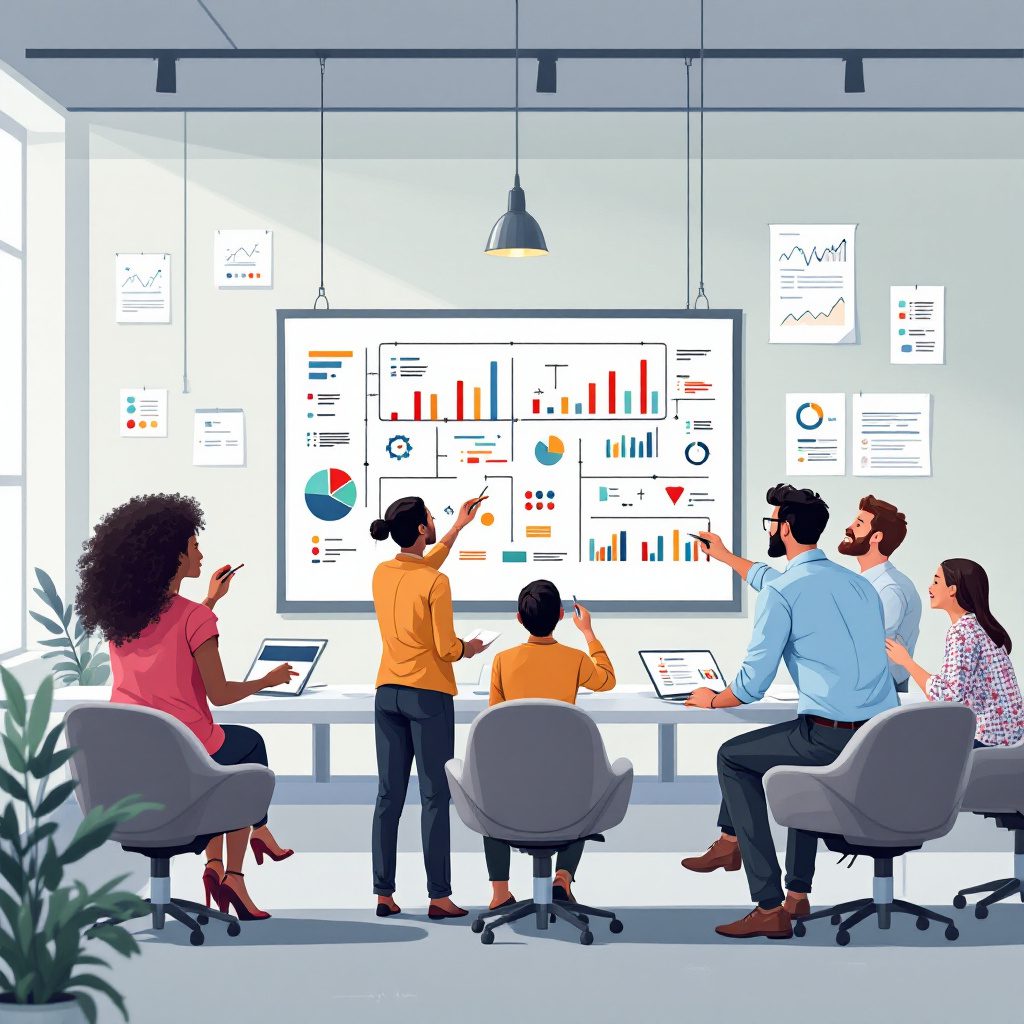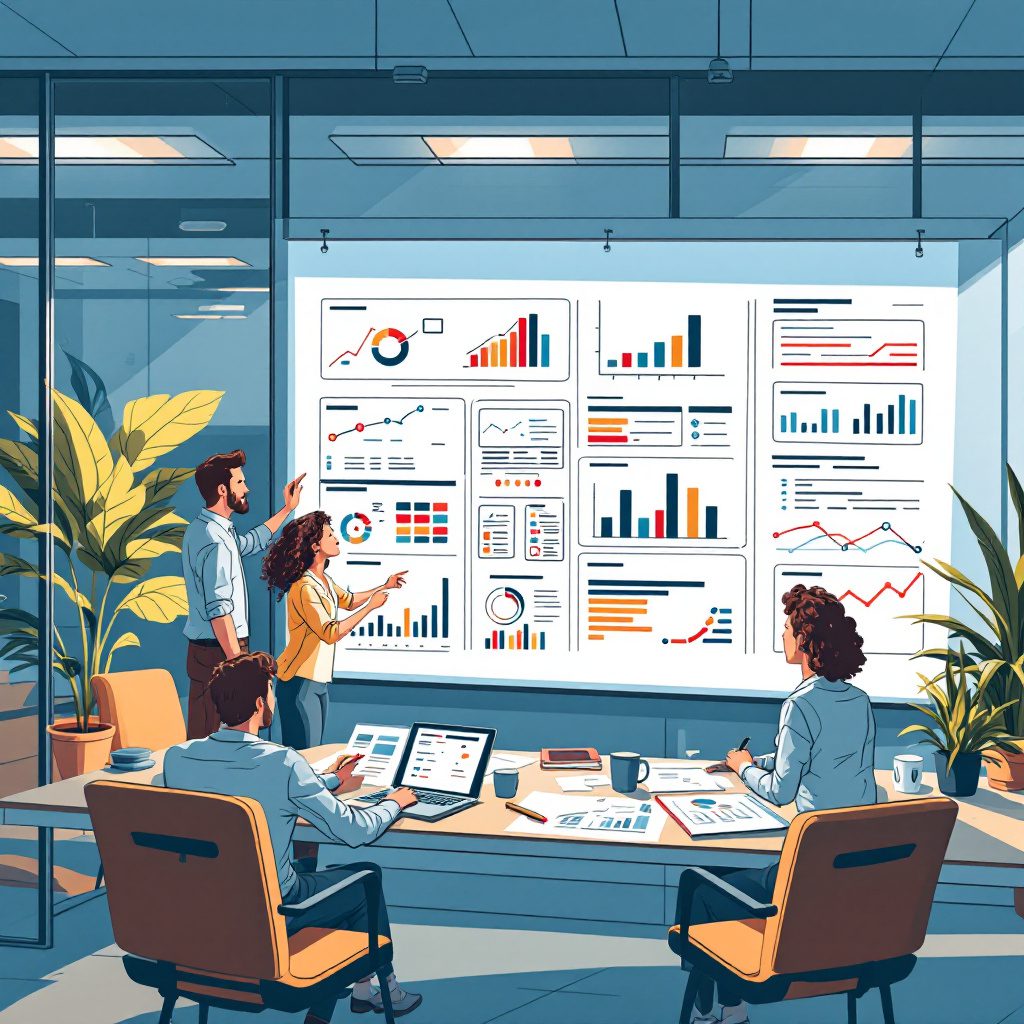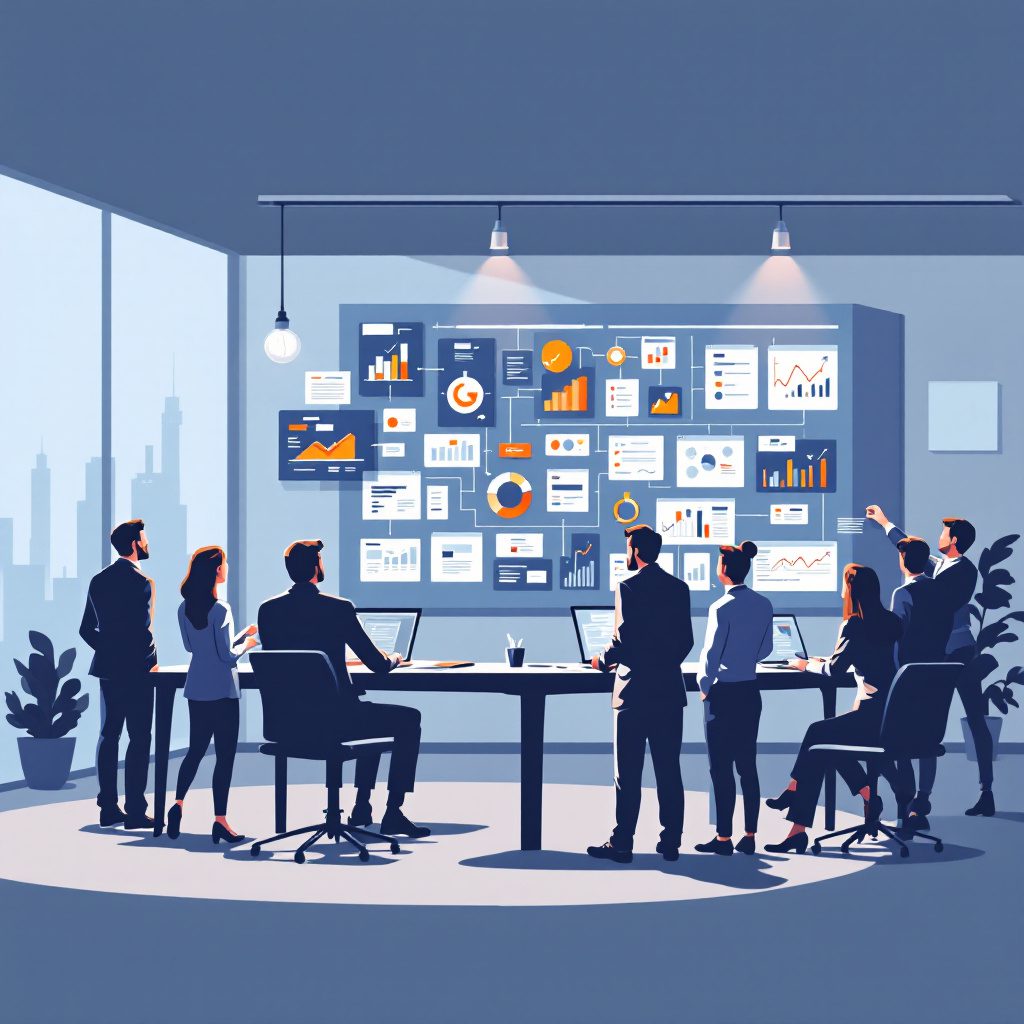
Let’s be honest — most companies try to fix efficiency problems with tools, tech, or more training. But the real fix? It’s strategy.
I’ve worked with companies that ran on overdrive — back-to-back meetings, 60-hour weeks, constant Slack pings — and still weren’t hitting their goals. Everyone was working hard, but not necessarily on the right things. That’s the key difference. Without strategic planning, your workforce ends up chasing fires instead of moving the business forward.
In this post, I’ll show you how strategic planning is the not-so-secret ingredient in workforce efficiency — and how to align your people, resources, and goals so you stop burning out your team and start building momentum.
What Is Strategic Planning and Why Does It Matter?
Strategic planning isn’t just a corporate buzzword — it’s the playbook for everything that matters in your organization.
It’s the process of defining your goals, understanding what resources you have, identifying what you need to succeed, and creating a realistic roadmap to get there. Sounds simple, right? But here’s the twist: it has to connect big-picture vision to real, daily action.
A strong strategic plan doesn’t live in a binder or a PowerPoint. It lives in how your people work, what they prioritize, and what they stop doing. Without it, you end up with:
- Confused teams
- Misaligned efforts
- Overworked departments spinning their wheels
Strategic planning isn’t about perfection. It’s about focus.
Workforce Efficiency Defined
Let’s get this straight — efficiency is not just productivity. It’s not just how fast people work or how many tasks they complete. It’s about how effectively time, energy, and talent are used to move toward strategic goals.
Here’s how I break it down:
- Efficiency = doing the right things in the right way with minimal waste
- Productivity = doing a high volume of things
- Effectiveness = achieving meaningful outcomes
True workforce efficiency means:
- Less rework
- Fewer silos
- Better outcomes with less stress
Most inefficiencies come from poor planning — not lazy employees. If people don’t know what matters most, they’ll work on what’s urgent, not what’s important.

How Strategic Planning Drives Workforce Efficiency
Here’s where strategic planning starts changing the game.
A good strategy helps your workforce:
- Align efforts with the company’s top priorities
- Focus on what matters, reducing time spent on low-impact tasks
- Coordinate across departments, eliminating redundant work
- Allocate resources like time, talent, and tools where they’re most needed
One client of mine used to run monthly “strategy scrambles” where they’d completely pivot their focus based on the latest crisis. That kind of constant switching drained morale and wasted hours. After implementing a rolling strategic plan and weekly team goal reviews, their projects finished faster — and their employees felt more grounded.
Planning saves time. Period.
Signs of Poor Strategic Planning in the Workforce
Think your organization might have a planning problem? Watch for these signs:
- People say, “I’m not sure why we’re doing this.”
- Teams work hard but can’t connect their efforts to company goals
- Multiple departments are doing overlapping projects
- Priorities shift constantly with little warning
- Employees are busy… but impact is low
These symptoms point to one root issue: lack of clear direction. That’s not a people problem — it’s a planning problem.
Strategic Tools That Improve Workforce Efficiency
You don’t need to reinvent the wheel — just use it better. Here are a few tools I recommend to boost alignment and efficiency:
- OKRs (Objectives & Key Results): Keeps goals visible, measurable, and connected
- Balanced Scorecard: Links strategic objectives to KPIs across departments
- Strategy Maps: Visualize how initiatives drive outcomes
- Workforce Planning Frameworks: Match talent to future capability needs
- KPI Dashboards: Track team performance in real time against strategic targets
Even a simple Google Sheet with aligned goals can change how your team thinks about their work.

Cross-Functional Collaboration and Strategic Focus
Here’s a hard truth: efficiency doesn’t happen in silos.
Your HR team can’t run effective workforce planning without understanding marketing’s strategy. Ops can’t streamline processes if sales keeps changing what “done” looks like.
Strategic planning forces interdepartmental collaboration. It gets everyone talking about:
- What matters most
- What’s coming next
- Who’s responsible for what
Middle managers play a huge role here. They translate high-level strategy into daily decisions — so if they’re out of the loop, your workforce is too.
Case Study: Strategic Planning Boosts Efficiency
Let’s talk about a fictional (but very real-feeling) company: SummitCo.
They had high turnover, constant task-switching, and a burned-out ops team. Their CEO kept pivoting priorities and demanding results — without giving any strategic clarity.
They brought in a facilitator, defined 3 core business objectives, and rolled out department-level OKRs. Weekly team meetings aligned to those goals. Cross-functional projects had clear handoffs and ownership.
In 6 months:
- Project completion times dropped by 25%
- Employee satisfaction scores rose 40%
- Training hours decreased while performance improved
It wasn’t magic. It was clarity through planning.
Conclusion
If your team is working hard but getting nowhere — the issue probably isn’t effort. It’s direction.
Strategic planning isn’t some ivory tower activity. It’s how you turn your company’s vision into actual outcomes. When done right, it gives your people focus, reduces confusion, and increases efficiency across the board.
Efficiency doesn’t start with new tools or longer hours. It starts with a clear plan — and people who understand how their work fits into it.
Get Started Today
Set aside time this month for a cross-functional strategic planning session. Get HR, operations, and department leads in the room. Define what matters — and build your workforce plan around that.



